Virtual Dynamics Master Series Power AC Cords, Interconnect and Speaker Cable
| Virtual Dynamics Master Series Power AC Cords, Interconnect and Speaker Cable |
|
Virtually Ideal |
|
|
|
March 2005 |
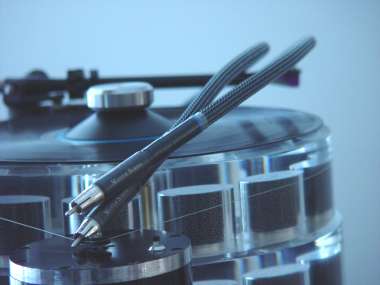
I should have known something was afoot when Clement Perry gave me a call one fine Saturday afternoon last summer. Without the usual polite chatter, Clement launched into, I kid you not, fifteen (straight) minutes of flat out gushing over the Virtual Dynamics Master Series cables. I couldn’t get a word in edgewise. I know Clement pretty well. While charged with a great deal of zeal for the high end, he is not prone to overreaction or hyperbole (that’s my department!). Clement has auditioned many products over the years and as a result, it takes a truly special experience to unleash the rave monster. After our conversation I thought to myself, “What the heck has gotten into him?” I quickly called Clement back for the manufacturer’s contact info and called Rick Schultzimmediately. By the end of our conversation a full set of the Virtual Dynamics Master Series cables were on their way.
Virtual, A Reality?
As a relative newcomer to the audio scene, Rick Schultz, Virtual Dynamics’ chief guru, has taken the game to the competition in a big way. The Master is no “Stepping stone” product used to introduce itself to the audio world only to take a number in the proverbial waiting room of the high-end, sitting in quiet awe of the established industry giants. Aimed squarely at use in the best systems, the Master will have to throw some pretty sharp elbowsto earn a spot in a market that has very nearly reached critical mass.
In the last several years we have seen cable manufacturers utilize many approaches to making wire. Internal illumination, water dialectic, battery operated grounding wires, and terminator boxes, in addition to all sorts of exotic metals hoping to solve whatever problems that typically plague a wire’s performance. Rick has joined the fray with the introduction of his “Speed of Light Technology,” which addresses the mechanical engineering aspect of passing an electronic signal. According to Newton’s third law: “For every action, there is an equal and opposite reaction.” This, with the understanding applied from the work of Charles Augustine de Coulomb, an engineer from the late 1700’s, is an equal and opposite flow of energy to an electric signal.
This opposing flow, in turn, creates friction, thus reducing the electrical energy to the output. Rick Schultz first tackled this phenomenon by re-coupling the innards of a Bryston 3B ST amplifier with a series of metal cones, much like the tweaks commonly used by audiophiles for component isolation. With these devices in place, the excess energy in the form of resonance was drained away from the flow of the signal, preserving the signals power. While expecting some improvement, Rick was shocked at the level of overall improvement to the amplifiers dynamics and transparency. In addition, the unit also ran far cooler.
But how can this same approach apply to wires? Through much experimentation, Rick found that by surrounding the conductor with small spherical metallic beads, the resonance created by the signal flow would be drained off by the resonant properties of the tightly packed beads and dissipated in the form of dampening, utilizing concepts of fluid mechanics. Due to the sheer amount of steel beads packed into the sheath, and large solid-core conductors used to lower signal resistance and linear distortion, the Master Cables are very stiff, though they can be bent into a cooperative shape.
“At the heart of Virtual Dynamics technologies all signal conductors are solid-core copper to reduce the problem of linear distortion created by multiple resistances to the signal or non-linear resistance. Linear distortion is most often created in cabling by allowing more than one path for the signal to follow thus stranded-conductors make for higher linear distortion” says Schultz.
Copper is used as it is the most conductive material when all audio frequencies are considered beyond 60 Hz, although silver is superior in most frequencies it has very high liner distortion as it is measurably better at higher frequencies and impaired with higher resistance at low frequencies thus a poor choice for any cable in the signal path. Mixing conductor types such as silver over copper furthers this problem by creating very incoherent sounds according to Schultz.
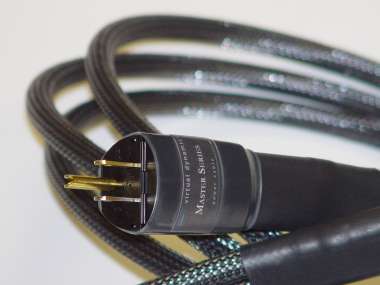 But it is not just steel beads or conductor understanding that makes Schultz’s cables unique or for that matter difficult to explain. Schultz found that by passing the conductor through the center of a powerful Neodymium magnet designed at both ends of the Master Series cables, the sound became faster, livelier and more transparent. While even Schultz cannot (to date) measure the effect, he believes the magnetic field aligns and propels or “speeds up” electrons by improving polarity of both electrons and protons (any and all nay-saying e-mails should be directed to Virtual Dynamics). If all that is not enough, Virtual Dynamics subjects each wire to tempering via Cryogenic treatment (super cooling), and/or annealing (super heating) followed by cable cooking. For those out of the loop, cable cooking is the practice of passing a wide bandwidth electrical signal through the cable for an extended period of time. Each of these steps anneals the metal improving the alignment of the metals molecular structure.
But it is not just steel beads or conductor understanding that makes Schultz’s cables unique or for that matter difficult to explain. Schultz found that by passing the conductor through the center of a powerful Neodymium magnet designed at both ends of the Master Series cables, the sound became faster, livelier and more transparent. While even Schultz cannot (to date) measure the effect, he believes the magnetic field aligns and propels or “speeds up” electrons by improving polarity of both electrons and protons (any and all nay-saying e-mails should be directed to Virtual Dynamics). If all that is not enough, Virtual Dynamics subjects each wire to tempering via Cryogenic treatment (super cooling), and/or annealing (super heating) followed by cable cooking. For those out of the loop, cable cooking is the practice of passing a wide bandwidth electrical signal through the cable for an extended period of time. Each of these steps anneals the metal improving the alignment of the metals molecular structure.
All Virtual Dynamics wire is copper with the Night II series being 10-gauge, Master Series of recent vintage 8-gauge and the coming Revelation series sporting a 6-gauge wire. (Revelation interconnects will be 8 gauge).
If you decide to give the Master a whirl, be forewarned of a protracted and often times frustratingly long break in process. The sound remained rather bright and not terribly smooth through the mid band for what seemed like forever in my system. At what might have been the 400 hour mark, the sound dramatically becomes super-smooth, open and without a hint of brightness. Beyond that point, the sound continued to settle in for another hundred or so hours.
Virtual, Dynamic?
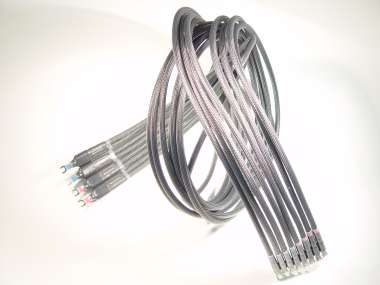 I started the review off by adding the Master Series AC cords first, followed by the speaker cables, and then finally the interconnects. I can honestly say that with each step, each additional inclusion seamed to have an equal impact in completing the Master’s effectiveness.
I started the review off by adding the Master Series AC cords first, followed by the speaker cables, and then finally the interconnects. I can honestly say that with each step, each additional inclusion seamed to have an equal impact in completing the Master’s effectiveness.
There are two words that best sum up my Virtual Dynamics Master cable experience: dynamics and clarity. Those are certainly not the only words I can think of, it’s just that everything else that the Master allows to happen springs forth from that sonic foundation. Tackling dynamics first, my system seemed louder than before, not in a “turn it down!” kind of loud, but more in the way live music presents dynamic contrasts, both large-scale and small. My room though unencumbered by near field reflections, does suffer from a rather high level of ambient noise as a 36’ X 14’ span of huge windows face over Broadway in SOHO. This tends to diminish some of the low-level resolution I hear in rigs such as Clement’s, where there is zero ambient noise. With the Master, there is so much dynamic action depicted emerging from a kind of silence that makes one really sit up and take notice.
Sounds of varying intensity within the soundscape; soft behind loud, very loud to the left of soft or an overall power swelling forth from the deepest of jet black backgrounds, it is all there.
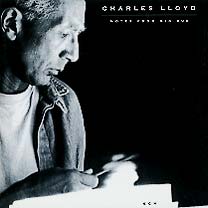 This, in a round about way, neutralized some of the less than optimum conditions in my room. A great moment occurs in the midpoint of Requiem, from Charles Lloyd’s “Notes From the Big Sur” CD [ECM 1465 511 999-2] as the group pounds away in tandem then suddenly quiets, leaving the plaintive wail of a solo saxophone to pick up the story line. The ability to seamlessly breathe dynamic life in and out of the music lends a sense of drama and musical tension essential to a convincing presentation.
This, in a round about way, neutralized some of the less than optimum conditions in my room. A great moment occurs in the midpoint of Requiem, from Charles Lloyd’s “Notes From the Big Sur” CD [ECM 1465 511 999-2] as the group pounds away in tandem then suddenly quiets, leaving the plaintive wail of a solo saxophone to pick up the story line. The ability to seamlessly breathe dynamic life in and out of the music lends a sense of drama and musical tension essential to a convincing presentation.
Another great aspect of the Master’s dynamic prowess is its even-handedness from top to bottom. The entire sonic picture receives the treatment. While you may notice the bass power or treble liveliness first, it soon becomes clear that the whole signal, having been previously choked back to one degree or another, has come to life. Midrange expressiveness lends more drama and artistic expression to the music and the involvement factor is improved. Go put on a song that you previously found rather drab and boring. With the Master Series, you may be pleasantly surprised by the transformation.
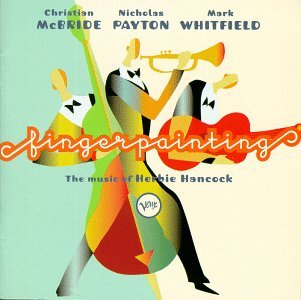 Track 3, Chameleon from “Fingerpainting: The Music of Herbie Hancock” [Verve 3145378562] proves this point perfectly. A trio of trumpet, guitar and bass, which features contemporary young lions Nicholas Payton, Christian McBride and Mark Whitfield, really go on this funk-laced hit. Slow paced, yet incisive and alive, this finger-snapping tune was suddenly infused with more dynamic expression once handled by the Master Series. Instead of it being a track I cleaned my fingernails to, it became one of those close your eyes and get lost in the music pieces. Any component that can recover recordings from the Land of the Lost is worth every penny.
Track 3, Chameleon from “Fingerpainting: The Music of Herbie Hancock” [Verve 3145378562] proves this point perfectly. A trio of trumpet, guitar and bass, which features contemporary young lions Nicholas Payton, Christian McBride and Mark Whitfield, really go on this funk-laced hit. Slow paced, yet incisive and alive, this finger-snapping tune was suddenly infused with more dynamic expression once handled by the Master Series. Instead of it being a track I cleaned my fingernails to, it became one of those close your eyes and get lost in the music pieces. Any component that can recover recordings from the Land of the Lost is worth every penny.
Moving On the Second Trait: Clarity.
I realize this term is the umbrella to a whole host of sonic touchstones such as transient speed and inner detail, just to name a few. Over all, there is an unveiling of the sonic picture that is at first, rather shocking. Like the Silversmith Palladium I reported on last year, the musical presentation of the system changes dramatically. For starters, the bass really surprised me while the midbass down through the deepest low-level bass was dramatically improved. The ability to focus and control the midbass, as mentioned earlier, helped corner the midbass hump I had been hunting down the last several months, by way of cleaning up any residual distortion imparted by other wire. There is absolutely no transient smear, or added bass warmth. All that is left is the tightest, deepest, fastest bass I have encountered to date. The electric bass all over Stanley Clarke’s “East Riverside Drive” [Epic-473797] is simply awe inspiring in its impact, focus, and timbre.
Moreover, the Master’s ability to render the full harmonic structure or color of the bass frequencies while so clearly presenting the speed and inner detail as a whole and in proper balance is what makes its performance unique and enthralling.
From the mid bass up, the clarity imparted by the Master Series reveals a wealth of information, from spatial clues within the soundstage to the inner detail of the image. The level of distortion commonly accepted by the ear-brain is chiseled and buffed away getting closer to the original signal than any other wire I’ve had thus far in my system. Like Michelangelo envisioning his creation within the precise dimensions of the virgin stone, the Master Series simply removes all unnecessary material, revealing all the beauty trapped within.
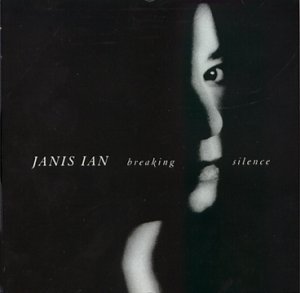 Janis Ian, singing the heartbreaking Tattoo from “Breaking Silence” [Morgan Creek 20023], her voice limped and hanging in space, dripped with the cool, numb detachment that can come from contemplating the horrors of the holocaust, was far more chilling than I had realized. Odetta singing America the Beautiful (sampler) ached with a world of weariness, giving the song more gravitas than I’ve ever heard expressed by any singer in those glorious words.
Janis Ian, singing the heartbreaking Tattoo from “Breaking Silence” [Morgan Creek 20023], her voice limped and hanging in space, dripped with the cool, numb detachment that can come from contemplating the horrors of the holocaust, was far more chilling than I had realized. Odetta singing America the Beautiful (sampler) ached with a world of weariness, giving the song more gravitas than I’ve ever heard expressed by any singer in those glorious words.
There is one “possible” caveat. If your system is already on the cold, edgy or forward side, like it has had two too many vente mocha brownie frappacinos, this stuff may be too much of a good thing. However, if your system is on the neutral/warm side, you won’t have any problems. In other words, don’t blame the messenger for the message. On the other hand, if your present wire is responsible for the hyped quality of your rig, the Master Series could well bring it in off the ledge.
Virtual Conclusion
Stepping back and reassessing the overall performance, there is one thing that is for sure: The Virtual Dynamics Master Series is fundamentally different from any other power chord, speaker wire or interconnect I have experienced. Adding up all the virtues described above gives a pretty good description of the sound of my system with the Masters in place. The difficulty, as Clement and I recently opined, is that the effect of the Virtual Dynamics is extremely difficult to fully express. Especially these days when there seems to be a collective breakthrough in the high-end, elevating the performance levels of contemporary wire and components to new heights only dreamed of a few short years ago. The sense that the signal has been amplified or charged with life in particular is something that must be heard to appreciate. There are however, many products that I have not had an opportunity to audition that may equal or perhaps best the Virtual Dynamics Master Series cables. Nordost, XLO, and Siltech all have proven to push the boundaries of reference performance over the years. Which of these are best? Like all things in audio, system synergy and availability will go a long way in deciding which will be best for your system.
Beyond the sonic traits described above, the real payoff comes when all the individual elements come together, revealing the humanity behind the notes. From Odetta’s power and grace, to Joe Satriani’s wailing guitar pyrotechnics, the sense that there is a human being filled with life’s hopes, dreams, loves and losses expressed through their instrument really shines through.
If you have made it to this point in the review, you are either extremely excited about these breakthrough products or you are paralyzed with incredulity. Either way the facts remain, the Virtual Dynamics Master Series cables represent a stunning achievement in high-end performance. Unlike many upgrades that rob Peter to pay Paul – you know the routine; improve some sonic areas of the performance while leaving others unchanged or worse, compromised – the Master Series cables, in my system as well as Clement’s, left no sonic stone unturned. While these cables are not inexpensive, their value shines through in the music they allow to flow from the speakers. I would call them a revelation but that moniker belongs to Virtual Dynamics top of the line products (which are soon to be released). I cannot wait to hear those. Stay tuned.
Greg Petan
Clement Perry Seconds That Emotion
 Yeah, I admit to having mixed feelings: somewhat embarrassed for losing that ever-so-cool demeanor many of you know me for (hey, wait a minute, Denzel got an Oscar for playing a bad guy). On the other hand, a strong sense of vindication crept in after Greg Petan (GP) called me back gushing more than I originally had. He simply heard what I was attempting to describe. Our systems are very different where his is analogue and mine is digital. It was very important for me to get his impressions due to our systems having different strengths and weaknesses. GP’s system is more dynamic by virtue of his room’s size, choice in amplification and loudspeakers. Mine is more intimate and overall sweeter with more transparency. GP’s former reference cables were also different from mine as well as twice the cost of the ($5k per six foot) Analysis Plus Gold, my former reference and still perhaps the best “other” cable I’ve heard. Proper arithmetic tells you GP’s reference were about $10k and after a single date with the VD Master Series at 1/3 the price, they too are now considered his best “other” cable. We both agreed after about two weeks of intense listening that Virtual Dynamics Master Series cables would be named our new reference.
Yeah, I admit to having mixed feelings: somewhat embarrassed for losing that ever-so-cool demeanor many of you know me for (hey, wait a minute, Denzel got an Oscar for playing a bad guy). On the other hand, a strong sense of vindication crept in after Greg Petan (GP) called me back gushing more than I originally had. He simply heard what I was attempting to describe. Our systems are very different where his is analogue and mine is digital. It was very important for me to get his impressions due to our systems having different strengths and weaknesses. GP’s system is more dynamic by virtue of his room’s size, choice in amplification and loudspeakers. Mine is more intimate and overall sweeter with more transparency. GP’s former reference cables were also different from mine as well as twice the cost of the ($5k per six foot) Analysis Plus Gold, my former reference and still perhaps the best “other” cable I’ve heard. Proper arithmetic tells you GP’s reference were about $10k and after a single date with the VD Master Series at 1/3 the price, they too are now considered his best “other” cable. We both agreed after about two weeks of intense listening that Virtual Dynamics Master Series cables would be named our new reference.
If some of you are wondering why I didn’t do this review since having the cables first, my reasons are hereby stated: I didn’t want to have to review both as I’ve the newer and twice as expensive Revelation Series cables under evaluation. Besides, I enjoy thesacred and long lost art of sharing among audiophiles. So I thought it would only be fair to have GP share his thoughts on what these cables did for his system independent of mine, especially since our conclusions proved virtually identical. In addition, these new sonic discoveries applies to Key Kim and our newest contributor in Don Shaulis whose comments follow my own.
One thing appears certain; in systems as varied as discussed here, the Virtual Dynamic cables proved revelatory. In only one system did the cable prove unworthy. A good friend of mine who has ears I respect did not appreciate the dramatic change in sound. Others who tried the VD Master felt it was on pair, if not better than anything they’d heard previously. Needless to say, I’ve taken these cables through the audiophile paces and then some.
Art Imitating Life
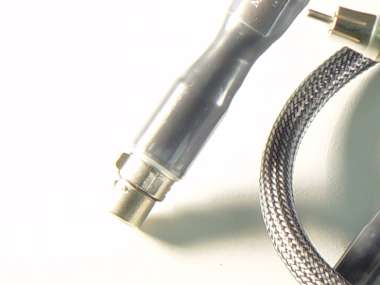 The very name Virtual Dynamics seems quite accurate a moniker for these wires are the most dynamically infused cables I’ve yet experienced. I’m not talking about oversized, sophomoric “Saving Private Ryan” hifi-ish type dynamics or the type you notice surely by way of embellishment. I’m talking about a very unique and delicate type of dynamic that appears closer to real life against an eerily quiet backdrop. This type of dynamic contrasting proves in the final analysis to be the least colored and as a result suffers from none of the “attention-seeking” mechanical acrobatics lesser cables I’ve heard display. I believe this to be a virtue of this cable’s amazingly low noise floor. It simply is the quietest I’ve come across.
The very name Virtual Dynamics seems quite accurate a moniker for these wires are the most dynamically infused cables I’ve yet experienced. I’m not talking about oversized, sophomoric “Saving Private Ryan” hifi-ish type dynamics or the type you notice surely by way of embellishment. I’m talking about a very unique and delicate type of dynamic that appears closer to real life against an eerily quiet backdrop. This type of dynamic contrasting proves in the final analysis to be the least colored and as a result suffers from none of the “attention-seeking” mechanical acrobatics lesser cables I’ve heard display. I believe this to be a virtue of this cable’s amazingly low noise floor. It simply is the quietest I’ve come across.
Granted, I’ve only listened to the Master Series Digital cables and speaker cables, but I’m thoroughly convinced these cables represent new levels of sonic sophistication for the discerning audiophile.
I am going to stop here, go back to listening to the Revelation series and report back on those shortly. Stay tuned
Key Kim offers his impressions
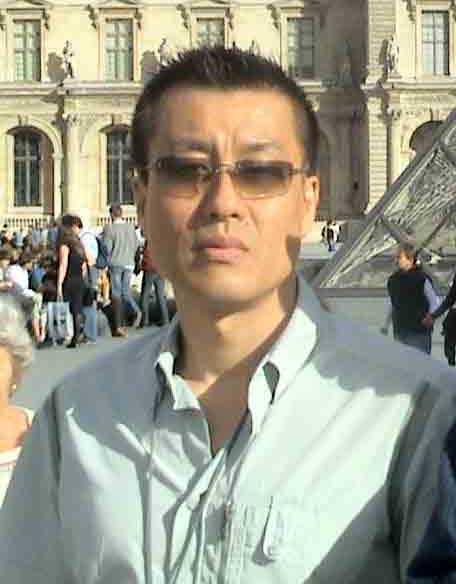 I have to concur with Greg’s full review (and the follow-ups from our distinguished team of contributors) of the Virtual Dynamics Master Series cables. Even as a relative newcomer to the audio scene, I can sincerely say that Virtual Dynamics’ talented designer Rick Schultz, has taken this old audiophile to a new level of music appreciation. The Master Series cables transformed my system’s sonic portrayal of instruments right out of box and got even better with another 200-hours of burn-in.
I have to concur with Greg’s full review (and the follow-ups from our distinguished team of contributors) of the Virtual Dynamics Master Series cables. Even as a relative newcomer to the audio scene, I can sincerely say that Virtual Dynamics’ talented designer Rick Schultz, has taken this old audiophile to a new level of music appreciation. The Master Series cables transformed my system’s sonic portrayal of instruments right out of box and got even better with another 200-hours of burn-in.
By adding Schultz’s designs to my system, it now captures the music in a highly emotional way. The clarity, focus, and delineation of individual instruments were noticeably improved. The Master Series began to produce startlingly natural and lifelike music. Listening to all kinds of music with the Master Series cables became a delight: music revealed itself in way it previously had not.
The first thing I noticed from the VD Master Series cables, was their utter lack of noise and ultra-fast transient response. This speed, and lack of noise, or the combined effects thereof, reduced an inherent effect that gives most, if not all, cables I’ve heard an aftertaste much like Diet Coke. This is the only cable I’ve experienced that allows you to appreciate the music by virtue of what it doesn’t do to an audio signal.
The Virtual Dynamics Master Series Cables represents a monumental achievement in cable design. The Master’s magic exists from top to bottom, throughout the musical range. By any measure, the Master Series Cables are a keeper. Rick Schultz has found the perfect name in this cable, for they are truly masterful.
Don Shaulis’ Response to the Master Series Digital Cable
The road of life takes many unexpected turns. One day I’m grumping at Clement Perry for not reviewing equipment I can afford, the next day he’s sending me a Virtual Dynamics Master Digital (SP/DIF) interconnect cable to review so I can hear for myself why he is so excited about it.
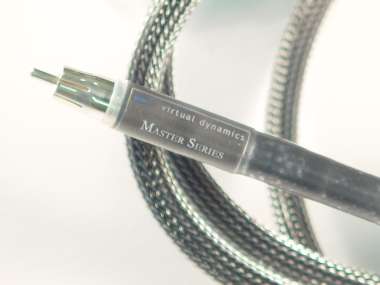 I promptly installed the Master between my Pioneer Elite DV-47A and my TacT RCS 2.2X. I know I shouldn’t have listened to the Master during break-in but I only have one system and walking around with earplugs in for two days is unpleasant.
I promptly installed the Master between my Pioneer Elite DV-47A and my TacT RCS 2.2X. I know I shouldn’t have listened to the Master during break-in but I only have one system and walking around with earplugs in for two days is unpleasant.
With approximately only 15 hours on this brand new cable, it had already tamed the harshness my system can exhibit when fed poorly. The bass and midbass were more defined and tight. The Master displayed what seemed to be an incongruous ability to exert total control while simultaneously relaxing. Pace, rhythm, and timing were excellent. Extraneous energy was removed from around the music leaving everything sounding more natural. At the same time the music was richer and fuller. There was more body, but it was firm body, not the flab and bloat exhibited by one well-known cable I recently auditioned. On some music this initially sounded a little subdued but then the purity of the music came through and I heard at least one song lyric correctly for the first time. All of a sudden, Neil Young shows up singing harmony on “Sweet Old World”, from Emmylou Harris’ Wrecking Ball [Elektra 61854] which gets my vote for the all-time most criminally produced/engineered CD. It is truly is a wrecking ball for systems with poor bass handling.
The Master seemed to clean the area around each instrument and vocalists. The separation that would be heard live was preserved. There was no dissection of the music. Everything was coherent but without the smearing together that we learn to accept when live is applied to one form of plastic or another.
After 175 hours of play the Master seemed to lose some of the initial magic. Is the Master exciting? No, cables should not be exciting. They should just do their job and not be noticed. That is what I get from the Master. I also tried the Master between my TacT RCS and TacT S2150 digital amp with similar results. I ultimately found my system sounded best with the Master at the front end. If the magic was lost there it could not be retrieved later. Two Master ICs would have been preferred.
Trouble In Paradise
I only had two faults with the VD Master Digital cable. The first was the cost but the second was that the cable is not user friendly because it is so stiff and heavy. After a modest amount of cable swapping, the RCA terminations no longer had a firm grip on my equipment. I lost signal connection several times. I finally rerouted the cable and was able to make it stay in place. This lack of a firm connection was noticed when the Master was used on other gear during the several “road trips” it made with me.
Now that I have mentioned road trips, I should add that the Master distinguished itself on a couple of systems belonging to friends. The Master was used between a couple of CD players and different Audio Note DACs. Each time the Master increased the depth and body of the music and provided a smoother, more musical, presentation. We auditioned several digital interconnects each time and the Master was always the standout.
The Virtual Dynamics Master Digital interconnect cable is the finest sounding digital IC I have used. It proved itself on every system I tried it on. I feel it would complement further upgrades to the rest of my equipment and would not become a weak link. Unfortunately, in the end, I cannot justify the price for the two I need for my system. The loose RCA connections are also a deciding factor. For the price of the Master, I do not tolerate any weakness.
The road of life takes many unexpected turns. And sometimes it just laps the cul-de-sac. I am still grumping at Clement to review equipment I can afford.
______________
Virtual Dynamics
Box 4494
5104-49a Street
Barrhead Alberta Canada T7N1A4
www.virtualdynamics.ca
Toll free phone 1-877-347-4489
Main 780-674-8870
Fax 780-674-5638
Greg Petan
7 Foot Master Power Cable (20 AMP IEC) $2,400.00
8 Foot Master Power Cable $2,750.00
8 Foot Master Bi-wire Speaker Cable $3,100.00
1 Meter Master XLR Interconnects $2,500.00
3 Meter Master XLR Interconnects $3500.00
![]()
Don’t forget to bookmark us! (CTRL-SHFT-D)
Stereo Times Masthead
Publisher/Founder
Clement Perry
Editor
Dave Thomas
Senior Editors
Frank Alles, Mike Girardi, Russell Lichter, Terry London, Moreno Mitchell, Paul Szabady, Bill Wells, Mike Wright, and Stephen Yan,
Current Contributors
David Abramson, Tim Barrall, Dave Allison, Ron Cook, Lewis Dardick, John Hoffman, Dan Secula, Don Shaulis, Greg Simmons, Eric Teh, Greg Voth, Richard Willie, Ed Van Winkle, Rob Dockery, Richard Doron, and Daveed Turek
Site Management Clement Perry
Ad Designer: Martin Perry





Be the first to comment on: Virtual Dynamics Master Series Power AC Cords, Interconnect and Speaker Cable